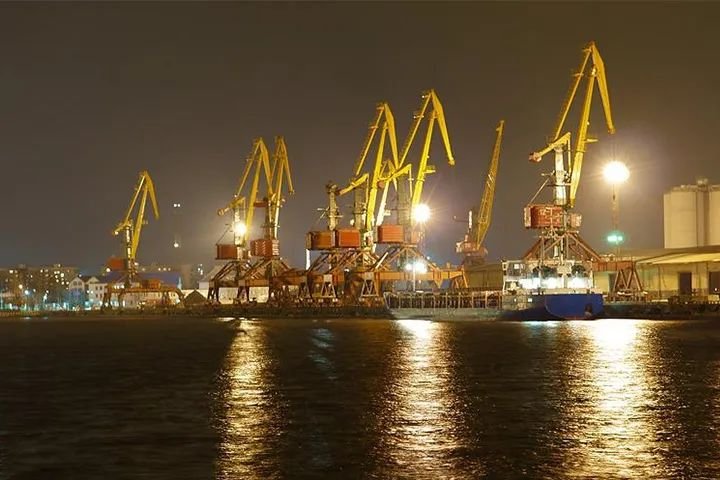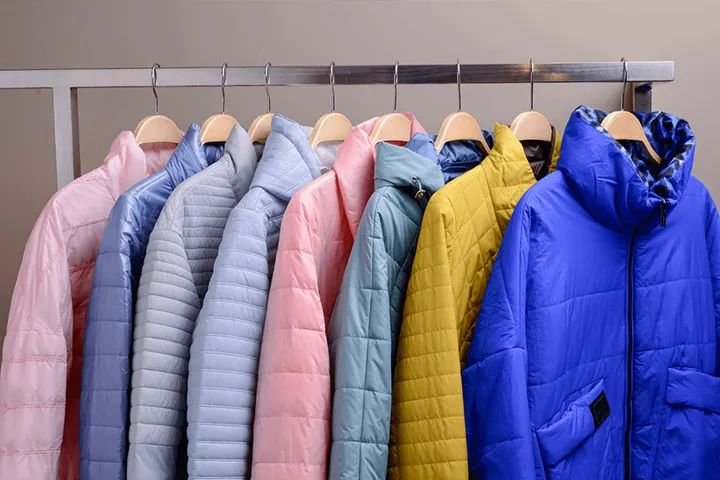Cn-down > Domestic news > News content
2024-05-12 来源:金绒 浏览量:1111
Summary
The market in the 19th week of 2024 (5.6-5.12) is generally stable.

The supply of white-feathered ducklings has remained relatively loose recently, but the future increase is limited. At the same time, the slaughter volume in May is basically stable compared with April, so the current supply of white duck down is still hovering at a relatively low level. Moreover, the settlement price of duck feathers in duck factories is still high, which makes the down market continue to be easy to rise but difficult to fall.
The "Golden Three Silver Four" peak season has passed, and the demand in the textile market has weakened. This year's domestic demand market for down apparel has been affected by this, making the off-season even longer. However, it is reported that the inventory adjustment of overseas customers is nearing completion, and with the arrival of the traditional peak season for down orders in May, purchasing and ordering should slowly begin.
Since the beginning of this year, the RMB has remained stable against a basket of currencies and has even appreciated to some extent. At the same time, Japan, South Korea and Southeast Asian countries, our country's important textile and clothing export destinations, have experienced varying degrees of currency depreciation. In addition to increasing import costs in overseas markets, this will also trigger foreign exchange tensions and a series of worsening chain reactions.
Good news this week
The General Administration of Customs announced on May 9 that in terms of RMB (the same below), our country’s total import and export value of goods trade in the first four months was 13.81 trillion yuan, a year-on-year increase of 5.7%. Among them, exports were 7.81 trillion yuan, an increase of 4.9%; imports were 6 trillion yuan, an increase of 6.8%.
In April, the total import and export value was 3.64 trillion yuan, a year-on-year increase of 8%. Among them, exports were 2.08 trillion yuan, an increase of 5.1%; imports were 1.56 trillion yuan, an increase of 12.2%; the trade surplus was 513.45 billion yuan. The pre-export value dropped by 3.8%, while the growth rate in April turned negative to positive, exceeding market expectations.
Lu Daliang, director of the Statistical Analysis Department of the General Administration of Customs, said that since 2024, positive factors in the field of foreign trade have continued to increase and momentum has continued to increase. In the first four months, our country's imports and exports grew by 5.7%. The growth rate was faster than the first quarter of 2024 and higher than the same period in 2023. The scale hit a record high for the same period in history.

Lu Daliang also said that in April 2024, our country's imports and exports to emerging markets continued to improve, and the growth rate of imports and exports to traditional markets such as Europe and the United States shifted from decline to increase. In addition, there were 2 more working days than the same period in 2023, and the overall import and export growth 8%, the foreign trade trend is obviously improving.
The export competitiveness of China-made and China-created products such as ships, electric vehicles, and construction machinery continues to increase. At the same time, the vast number of foreign trade companies are keen to capture and grasp sports economic business opportunities such as the Olympic Games and European Cup. In the first four months, "World Supermarket" Yiwu's exports of sporting goods increased significantly by 45.6%.
In addition, in the first four months, our country's textile and apparel exports to the world totaled 638.22 billion yuan, an increase of 4%. Among them, the export of textiles was 314.59 billion yuan, an increase of 4.6%; the export of clothing and clothing accessories was 323.63 billion yuan, an increase of 3.3%.
source | 金绒采编自海关总署
Recently, in the workshop of Hubei Lianao Outdoor Products Co., LTD., located in Zhangjin Town, Qianjiang City, each production line is at full capacity, and the workers are busy making orders, scheduling, cutting, sewing, binding, and a busy production scene.
"The cumulative output value in the first quarter was nearly 10 million yuan, an increase of about 10% compared to the same period last year." Yu Lihua, manager of the company's IE department, said that this year's orders are sufficient. The company mainly produces high-end jackets, mountaineering jackets, down jackets, sleeping bags, etc. Special functional outdoor products are exported to Europe and America.
"In order to respond to market demand and further improve production capacity and efficiency, the company is advancing the construction of the second phase of the project at full speed. Currently, all types of certificates have been obtained, and work such as land leveling and factory building construction will begin immediately. It is planned to move to the second phase of the project in October. We will strive to achieve the annual output value target of 35 million yuan by the end of the year,” Yu Lihua said.

Also very busy is Hubei Zhuoxin Clothing Co., Ltd. just across the road. In the production workshop, there is the sound of motors and colorful threads flying. Workers are working skillfully on the production line. Fabrics of various colors are carefully processed and turned into fashionable garments.
CAI Lian, manager of the production and operation department of the company, introduced: "The company's orders are mainly from major domestic clothing brands, mainly to produce down jackets. At present, the production lines of the three factories are running at full capacity, and more than 1,000 workers are working hard to meet the orders.
In recent years, Zhangjin Town has made every effort to build a clothing industrial park, and orders from well-known brands such as Uniqlo, Bosideng, and Ai Lai have been pouring in. Groups of "Qianjiang tailors" who returned to their hometowns for employment also received generous rewards and a happy and stable life due to the revitalized garment industry in their hometown.
source | 潜江新闻网
On May 1, the data released by the US Institute for Supply Management (ISM) showed that due to the decline in demand, the US ISM manufacturing index fell back into contraction in April, but the price index hit a new high since 2022, when the peak of this round of inflation, highlighting the current US inflation pressure rekindled.
The U.S. ISM manufacturing PMI index fell by 1.1 points to 49.2 in April (50 is the dividing line between prosperity and contraction). In March, the U.S. ISM manufacturing index was unexpectedly better than expected, ending 16 consecutive months of manufacturing contraction. However, it seems that this expansion is only a flash in the pan, and the road to recovery for the U.S. manufacturing industry is still bumpy.

The latest U.S. ISM manufacturing data suggests that the U.S. manufacturing sector is struggling to gain momentum after some signs of optimism about the outlook for the manufacturing sector earlier this year, analysts said. Manufacturing producers continue to contend with rising interest rates, rising input costs and sluggish overseas markets.
Apparel, leather and related products (including down products) industry report: New orders, production, employment, supplier deliveries, inventories, customer inventories, raw material prices, backlog orders, new export orders and imports are all moderate. This shows that the industry's customer inventory index has changed from "too high" last month to a "just right" level, which has a neutral impact on future production.
source | ISM、华尔街见闻
Bad news this week
According to China Customs statistics, from January to March this year, our country's total exports of clothing (including clothing accessories, the same below) were US$33.82 billion (the same below), a year-on-year increase of 1.1%. Among them, clothing exports from January to February increased by 12.7% year-on-year due to a low base in the same period last year; exports in March were US$10.43 billion, a year-on-year decrease of 17.9%.
The main reason for the large decline in March was the high base factor in the same period last year (the backlog of goods was shipped intensively after the epidemic was relaxed in March last year, and exports surged 32.3% year-on-year). Compared with March in previous years, the export scale this year is still at a historically high level, with an increase of 25.1% compared with March 2019 before the epidemic.
From January to March, our country's clothing exports experienced an increase in volume and a decrease in price. First, the export price increased significantly in the same period last year, resulting in a high base; second, although demand in the international market has rebounded, it tends to favor low-priced goods; third, the proportion of cross-border e-commerce exports with lower unit prices has increased significantly.

In terms of down jackets, the export volume from January to March 2024 dropped by 65% year-on-year, and the export value dropped by 60% year-on-year. Among them, exports to the EU, the United States, Canada and Russia all dropped significantly, but exports to South Korea and Japan increased slightly.
Jiangsu, Fujian, Zhejiang, Shandong and Guangdong are the top five ports for down jacket exports in our country. Among them, Jiangsu's exports were 22.27 million yuan, a year-on-year decrease of 29%; Fujian's exports were 10.71 million yuan, a year-on-year decrease of 87%; Zhejiang's exports were 9.4 million yuan, a year-on-year decrease of 90%.
The top four markets for down jacket exports from January to March were the European Union, Australia, South Korea and Chile. Among them, exports to the EU were 15.59 million yuan, a decrease of 54%; exports to Australia were 10.01 million yuan, a decrease of 25%; exports to South Korea were 5 million yuan, an increase of 5%; exports to Chile were 3.85 million yuan, a decrease of 16%.
source | 金绒整理自海关总署、中国纺织品进出口商会
In the first quarter of this year, our country's home textile export momentum stabilized, with cumulative exports of US$7.39 billion, a year-on-year increase of 3.2% and an increase of 27.4% over the same period in 2019. The export market shows a trend of differentiation, with exports to the United States, the European Union, Central Asia and other regions increasing, and exports to ASEAN, Japan and other regions declining.
However, our country’s down bedding (quilts, bedspreads, other bedding and similar supplies filled with feathers or down) totaled only US$84 million in exports from January to March, a year-on-year decrease of 14%. Among them, down quilts were exported to US$43 million, a year-on-year decrease of 10%. In this quarter, our country's down bedding exports fell by 25% compared with the fourth quarter of 2023.
In the fourth quarter, the top four markets for our country's down bedding exports were the United States, the European Union, Australia and Japan. Among them, exports to the United States were US$32.52 million, a year-on-year increase of 3%; exports to the EU were US$14.3 million, a year-on-year decrease of 28%; exports to Australia were US$7.16 million, a year-on-year decrease of 14%; exports to Japan were US$6.3 million, a year-on-year decrease of 38%.

Zhejiang, Shanghai, Anhui, Jiangsu and Guangdong are the top five ports for down bedding exports in our country. In the fourth quarter, the five ports exported a total of US$81.22 million in down bedding, a year-on-year decrease of 13%.
Among them, Zhejiang’s exports were US$50.69 million, down 5%; Shanghai’s exports were US$11.88 million, down 23%; Anhui’s exports were US$8.56 million, down 18%; Jiangsu’s exports were US$6.49 million, down 29%; Guangdong’s exports were US$3.5 million, down 18%
Judging from the main market conditions, U.S. home textile imports increased slightly in the first two months, achieving positive growth for the first time since the beginning of 2023, and imports from China also showed a stabilizing trend. At the same time, the import demand of the European Union and Japan is also slowly recovering, and China still maintains a large advantage in its home textile exports.
source | 金绒 数据来自海关
May is the traditional time for stocking up on big ducks. At present, butchery companies and the market have truly realized that supply exceeds demand. Even though the main sales area in South China has been affected by bad weather recently, terminal digestion is still supported by the business philosophy of "tuning more than selling", and prices have risen steadily and staggered. In addition, the main production areas are gradually heating up, resulting in a decrease in the proportion of large-scale output, and the current safe price can boost market operations.
Returning to the market, as various markets have holidays on May Day to varying degrees, downstream channels have been quite active in replenishing goods.Separately, even if the segmentation of small white strips ducks and ducks has become a trend of inventory growth in the market, the market's hot drive also offset the concerns of operators.

The duck seedlings have been rising steadily this month, and the future sales of small white-striped ducks will be difficult to achieve. The reduction in slaughter volume in May is bound to provide benefits for the foreseeable increase in digestive demand. Looking back, the price of pigs continues to decline slightly, but the current price of less than "15 yuan/kg" still makes the industry appear weak and stable.
The overall price of duck products is at the mid-range level in recent years, especially the current orders of duck are in short supply, and the market situation is still clear in the short term. The industry continues to discuss the curse that must fall during the holidays. Looking at the current May Day, the possibility of being broken is relatively high.
source | 佳合集团营销中心
News situation
This week’s news is mixed with good news and bad news, and the market trend is still unclear.
During the 18th week (4.29-5.5), the industry estimates that the number of duck seedlings has stabilized at an average of about 11 million birds per day, and will show an increase in the later period. The current number of hatchlings will correspond to a corresponding increase in the number of meat ducks sold in the future, which may lead to a slight increase in the supply of duck feathers.
The latest data released by the General Administration of Customs on May 9 showed that favorable factors such as the continued effectiveness of policies to stabilize foreign trade, the gradual entry of overseas importers into a replenishment cycle, and the boosting of corporate confidence caused the decline in textile and apparel exports in April to narrow significantly compared with the previous month. In terms of US dollars, clothing exports in April were US$11.74 billion, a decrease of 4.4% and a month-on-month increase of 12.6%.
In the first quarter of 2024, our country's exports of down clothing and down bedding have declined to a certain extent, but it should also be seen that import demand in some countries and regions is slowly recovering, and China's exports of down products still maintain a large advantage.
 热门排行
中国三大羽绒生产基地之—广东吴川
全球最奢侈羽绒服排行
一件羽绒服需要多少只鸭子的羽绒?
飞丝是什么?能代替羽绒?别被骗了,三种方法让你告别假羽绒服!
2017羽绒原料价格一路上涨,究竟为何?
你的羽绒服为什么钻绒?涨知识了
羽绒被的价格一般是多少 通过成本看羽绒被价格
中国羽绒服四大品牌调查:到底谁才是最强王者?
羽绒金网:羽毛、羽绒、毛绒计价
《羽绒羽毛》、《羽绒羽毛检验方法》新版标准发布,2017年7月1日实施
热门排行
中国三大羽绒生产基地之—广东吴川
全球最奢侈羽绒服排行
一件羽绒服需要多少只鸭子的羽绒?
飞丝是什么?能代替羽绒?别被骗了,三种方法让你告别假羽绒服!
2017羽绒原料价格一路上涨,究竟为何?
你的羽绒服为什么钻绒?涨知识了
羽绒被的价格一般是多少 通过成本看羽绒被价格
中国羽绒服四大品牌调查:到底谁才是最强王者?
羽绒金网:羽毛、羽绒、毛绒计价
《羽绒羽毛》、《羽绒羽毛检验方法》新版标准发布,2017年7月1日实施
 推荐阅读
“吴川力量”助中国羽绒接轨世界
中国三大羽绒生产基地之—广东吴川
中羽协第二期新国标培训班 在“羽绒之乡”广东吴川成功举办
羽绒之乡:贵港桥圩镇将打造旅游休闲特色小镇
广西贵港桥圩镇:打造中国羽绒休闲旅游特色小镇
羽绒金网:羽毛、羽绒、毛绒计价
羽绒别急着收 中央气象台发布寒潮蓝色预警 部分地区降温超12℃
上海消保委检测 千元鹅绒被用鸭毛绒填充
冻哭丨降温10℃!鸡年首个寒潮预警来袭,你准备好了吗?
传统羽绒产业如何实现转型升级?四川玉泉镇产业集群发展
推荐阅读
“吴川力量”助中国羽绒接轨世界
中国三大羽绒生产基地之—广东吴川
中羽协第二期新国标培训班 在“羽绒之乡”广东吴川成功举办
羽绒之乡:贵港桥圩镇将打造旅游休闲特色小镇
广西贵港桥圩镇:打造中国羽绒休闲旅游特色小镇
羽绒金网:羽毛、羽绒、毛绒计价
羽绒别急着收 中央气象台发布寒潮蓝色预警 部分地区降温超12℃
上海消保委检测 千元鹅绒被用鸭毛绒填充
冻哭丨降温10℃!鸡年首个寒潮预警来袭,你准备好了吗?
传统羽绒产业如何实现转型升级?四川玉泉镇产业集群发展